Labs8 is fueled by discovering ways technological innovations can move businesses forward. So it’s no surprise that our team has been in the lab experimenting with Virtual Reality (VR), Mixed Reality (MR) and Augmented Reality (AR). These cool technologies offer businesses opportunities to improve productivity and enhance their customers experiences. We hope this article will stir your imagination to think about the possibilities VR/AR could offer your business.
We will begin by taking a look at the functionalities offered by each of these extended reality platforms. We expect extended reality technology to follow a path similar to other technological innovations like browsers and smartphones. Where the technology becomes branded like Chrome and Safari or Android and iPhone. Each brand sharing similar functionality with unique brand features to attract users. At this point the technology remains larger than any one brand’s interpretation of it.
Virtual Reality (VR)
Think “Ready Player One” kind of stuff or “Matrix” for those of us who are a bit older. This platform completely immerses the user in a virtual 3D world, where all anchor points to the real world are replaced. Virtual Reality (VR) technology works by replacing senses such as sight, sound and even touch with computer generated alternatives. VR tricks the brain into fully replacing reality with a virtual world. The user is completely immersed in this environment of 3D images, sounds and even replicated movement.
The VR platform requires specialized equipment such as high tech headsets, gloves and even treadmills to simulate movement. Most of the early adopter users in Virtual Reality are heavy gamers. While sales for VR equipment are growing at extraordinary rates, saturation remains low with 130M estimated VR users worldwide in 2018 (Statista 2018). The smaller reach may be a deterrent for businesses focused on broader markets. With smartphone users estimated at 2.53B in 2018 (Statista 2018), Mixed Reality and Augmented Reality platforms which users can experience through their smartphone represent greater immediate opportunities for businesses.
Summary of VR:
- Full immersion
- 3D environment completely outside real world
- Requires specialized equipment
- Low user saturation (130M users worldwide-Statista 2018)
Mixed Reality (MR)
The Mixed Reality(MR) platform sits somewhere between Virtual Reality and Augmented Reality. The differentiation can be a bit vague and over time we may see this platform disappear as it is absorbed by VR or AR. The best way to describe this platform is a combination of real world with some virtual 3D elements.
An example of MR is the brochure handed out during the opening weekend of the latest Jurassic World movie. The printed brochure has a large T-rex on the cover with various articles related to the movie and dinosaurs inside. What makes this brochure a great example of MR is that when you use the Regal app to scan the Movie Magic icon, the pages come to life through your smartphone. The MR features included exclusive live interviews with the actors and 3D dinosaurs jumping off the pages. Using MR, Regal created an experience for their customers that goes beyond the movie screen to follow them home.
 The technology used to create the virtual elements that make up the MR experience relies on some device to transform the visual received by the optic nerve into a 3D image. This device can be as simple as the camera component of a smartphone to Microsoft’s sophisticated Hololens that is a wearable holographic computer allowing you to see holographic images in real life settings. As mentioned earlier, the widespread usage of smartphones, makes MR more appealing to businesses targeting broader markets.
The technology used to create the virtual elements that make up the MR experience relies on some device to transform the visual received by the optic nerve into a 3D image. This device can be as simple as the camera component of a smartphone to Microsoft’s sophisticated Hololens that is a wearable holographic computer allowing you to see holographic images in real life settings. As mentioned earlier, the widespread usage of smartphones, makes MR more appealing to businesses targeting broader markets.
Summary of MR:
- Combination of virtual elements and physical world
- 3D elements
- Can be used with specialized equipment or smartphone
- Broader reach through smartphones (2.53B users worldwide -Statista 2018)
Augmented Reality (AR)
Augmented Reality (AR) offers the most opportunities for business looking for broader reach and cost effective solutions from extended reality platforms. Augmented Reality provides an overlay of information to the user while they remain fully engaged in the real world. This overlay might be content displayed through your smartphone or it could be information received audibly through headphones. Either way, it serves to enhance the user experience by augmenting relevant information directly to the user’s physical environment.
Similar to MR, Augmented Reality needs user reference points either through a phone camera or gps, to be able to offer up useful information. Imagine doing a home repair on your kitchen faucet. You use your phone to scan a leaky faucet and step by step digital instructions for the repair pop up on your smartphone. These instructions are visible as you look at the faucet through your phone eliminating the need to re-orient as you move your eyes between the faucet and instructions saving the users time and frustration. There are many additional application examples of AR technology enhancing customers experiences and they can all take place through a smartphone.
Summary of Augmented Reality (AR):
- Remain fully present in physical environment
- Brings digital content into physical environment
- Can be used with specialized equipment or smartphone
- Broader reach through smartphone AR access point (2.53B users worldwide -Statista 2018)
Ready to explore the possibilities Augmented Reality can offer your business?
Check out the AR applications Labs8 has been working on!


